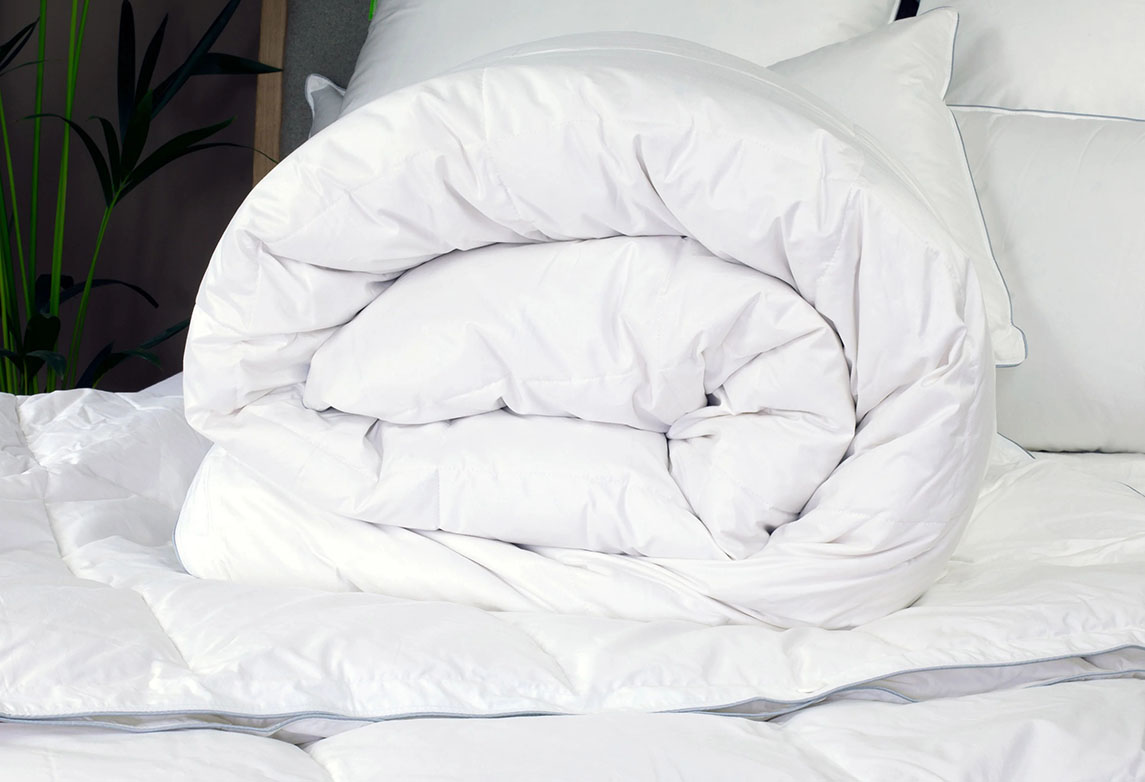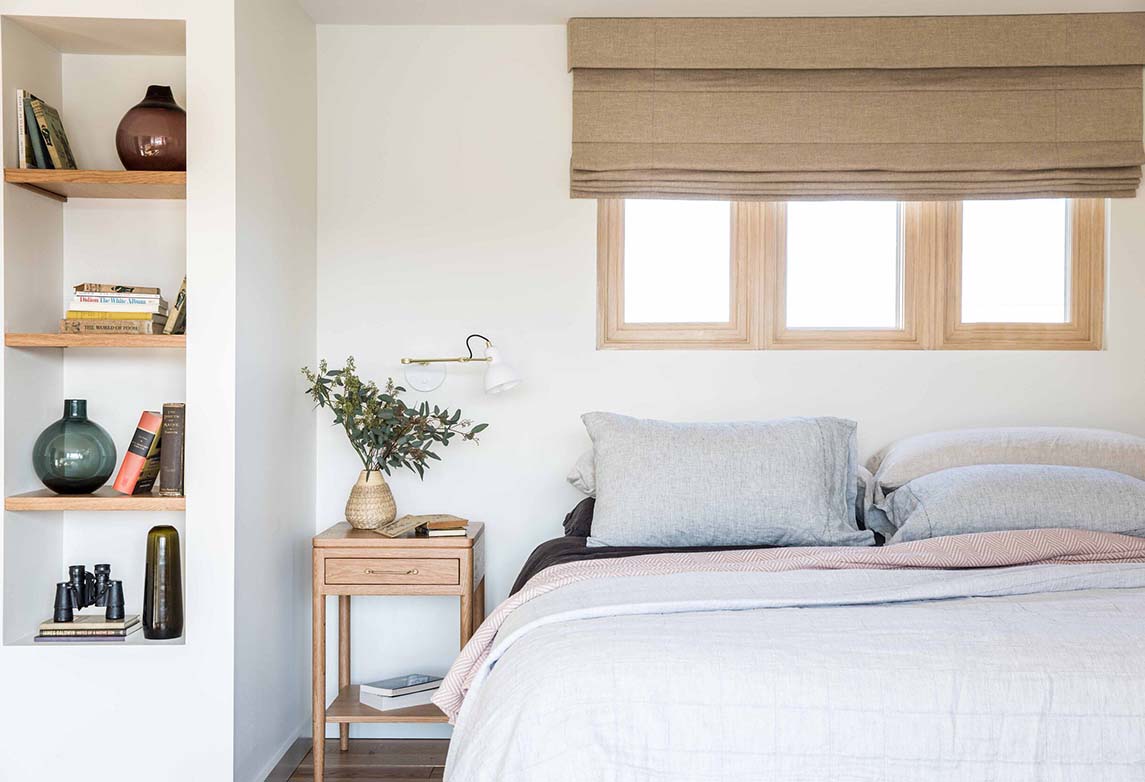A good duvet is essential for a comfortable and restful night’s sleep, but finding the right one that works for all seasons can be tricky. You want something warm enough to keep you cozy during the winter, yet breathable and light enough to ensure you don’t overheat in the summer. Choosing the right duvet can significantly improve your sleep quality and overall comfort throughout the year. In this comprehensive guide, we’ll explore everything you need to know about choosing the best duvet for all seasons—from materials and fillings to tog ratings and size.
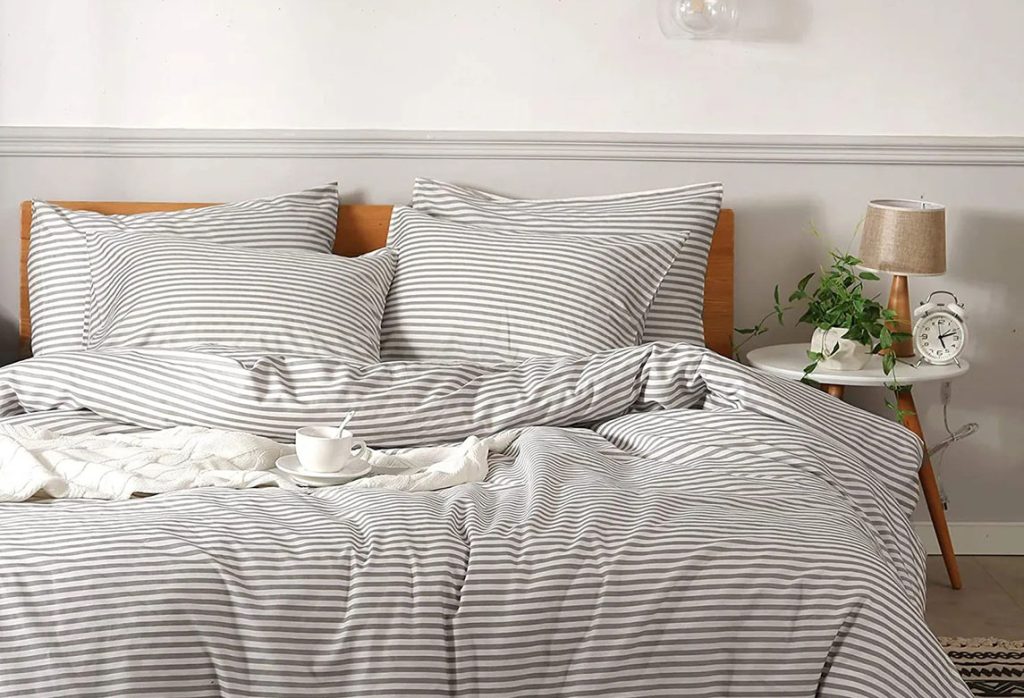
1. Understanding Tog Ratings
The first thing to consider when choosing a duvet is its tog rating. Tog is a unit of measurement used to describe the duvet’s ability to trap warm air and provide insulation. The higher the tog rating, the warmer the duvet will be. When selecting a duvet for all seasons, you need to balance warmth with breathability.
- Summer Duvets: These typically have a lower tog rating, around 4.5 tog or less. They are designed to keep you cool and comfortable during the warmer months.
- Winter Duvets: These have a higher tog rating, often around 12 to 15 tog, providing warmth and insulation in colder weather.
- All-Season Duvets: The perfect all-season duvet usually comes in the form of a combination duvet. This includes two separate layers—a lightweight duvet (around 4.5 tog) for summer and a heavier duvet (around 9 tog) for spring and autumn. You can snap or tie them together to create a high tog (around 13.5 tog) duvet for winter.
When buying an all-season duvet, check if it offers the flexibility to combine layers or adjust the tog rating according to the season.
2. Duvet Fillings: Natural vs. Synthetic
The filling of the duvet is one of the most crucial aspects to consider. Duvet fillings can be broadly classified into natural and synthetic, each with its own advantages and drawbacks. Let’s break down the key differences:
a. Natural Fillings
Natural fillings, such as down and feather, wool, or silk, are known for their comfort, warmth, and breathability. They’re great for regulating temperature, making them ideal for all-season duvets.
i. Down and Feather
Down is the soft, fluffy layer found under the feathers of birds such as ducks and geese. Feather is the outer layer. Down duvets are incredibly lightweight, fluffy, and excellent insulators.
- Goose Down: Considered the premium option, goose down is light, soft, and has better insulating properties than duck down. It’s perfect for providing warmth in the winter while remaining breathable enough for summer.
- Duck Down: While not as luxurious as goose down, duck down is still an excellent and more affordable option. It’s slightly heavier but still offers great warmth-to-weight ratio.
- Pros: Exceptional insulation, lightweight, durable.
- Cons: Can be expensive, requires regular shaking to maintain fluffiness, may not be suitable for allergy sufferers.
ii. Wool
Wool-filled duvets are naturally hypoallergenic, breathable, and excellent at wicking away moisture. Wool regulates body temperature, making it a great option for both hot and cold sleepers.
- Pros: Temperature-regulating, hypoallergenic, moisture-wicking.
- Cons: Heavier than down, not as soft or fluffy.
iii. Silk
Silk duvets are luxurious and hypoallergenic. They are naturally temperature-regulating, making them suitable for all seasons.
- Pros: Hypoallergenic, lightweight, regulates temperature.
- Cons: Expensive, not as fluffy as down.
b. Synthetic Fillings
Synthetic duvets, typically made from polyester or microfiber, are a popular alternative to natural fillings. They are designed to mimic the feel of down and other natural materials but come with their own set of benefits.
i. Hollowfiber
Hollowfiber is a common synthetic filling that is lightweight and provides good insulation. It’s affordable and hypoallergenic, making it ideal for those with allergies.
- Pros: Affordable, hypoallergenic, easy to care for.
- Cons: Less durable than natural fillings, not as breathable.
ii. Microfiber
Microfiber is another popular synthetic material. It’s softer and more lightweight than hollowfiber and designed to mimic the feel of down. It provides good warmth and is often more breathable than hollowfiber.
- Pros: Lightweight, affordable, hypoallergenic, softer than hollowfiber.
- Cons: Still less breathable than natural fillings, may not last as long.
Which to Choose?
If you’re looking for luxury, durability, and natural temperature regulation, go for a down or wool-filled duvet. For a more affordable, hypoallergenic option, synthetic fillings like microfiber or hollowfiber are a great choice. Keep in mind that natural fillings tend to last longer than synthetic ones but require more care.
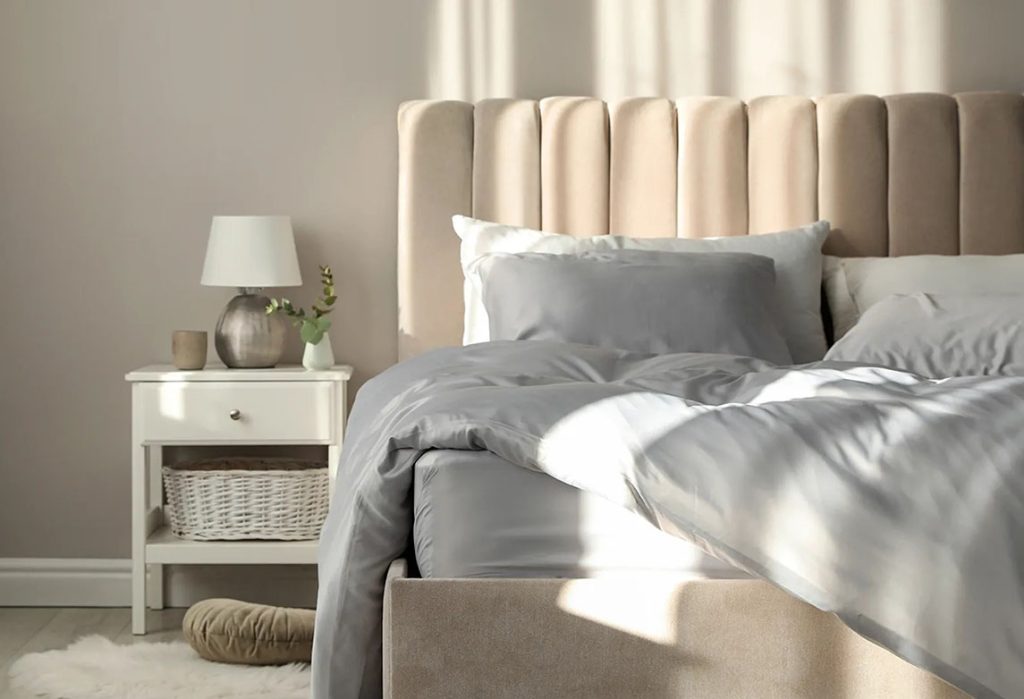
3. Duvet Construction and Stitching
The way a duvet is constructed affects how evenly the filling is distributed and how long it will last. There are two main construction methods to look for:
a. Box Stitching
Box stitching (or baffle box construction) involves stitching the duvet in a grid pattern to create small, individual pockets that hold the filling. This ensures the filling stays evenly distributed, preventing it from clumping in one spot.
- Pros: Even distribution of filling, better insulation.
- Cons: Can be more expensive due to the detailed construction.
b. Channel Stitching
Channel stitching involves stitching long, vertical or horizontal channels into the duvet. While this allows the filling to move more freely, it can lead to uneven distribution over time, causing cold spots.
- Pros: More affordable.
- Cons: Filling can shift, leading to uneven warmth.
For an all-season duvet, box stitching is generally the better option because it maintains consistent warmth and prevents the filling from shifting over time.
4. Duvet Size Guide
Choosing the correct duvet size is essential for ensuring comfort. The size of your duvet should match the size of your bed, but it’s also worth considering whether you want extra coverage.
- Single Duvet: 135 x 200 cm (53 x 79 inches)
- Double Duvet: 200 x 200 cm (79 x 79 inches)
- King Duvet: 225 x 220 cm (89 x 87 inches)
- Super King Duvet: 260 x 220 cm (102 x 87 inches)
For couples, a duvet one size larger than the bed (e.g., using a king-size duvet on a double bed) can offer extra coverage and reduce arguments over stolen covers!
5. Temperature Regulation and Breathability
For an all-season duvet, temperature regulation is key. You don’t want to be too hot in the summer or too cold in the winter, so choosing a duvet that can adapt to different temperatures is crucial.
a. Breathability
Natural fillings like down, wool, and silk are naturally breathable, allowing air to circulate and preventing overheating. Wool is particularly good at wicking moisture away from the body, helping to regulate temperature.
Synthetic materials, particularly higher-end ones like microfiber, can offer decent breathability but may still trap heat more than natural materials.
b. Moisture-Wicking
Wool and silk fillings are excellent at wicking away moisture, keeping you dry and comfortable throughout the night. This makes them ideal for people who sweat a lot during sleep or live in humid climates.
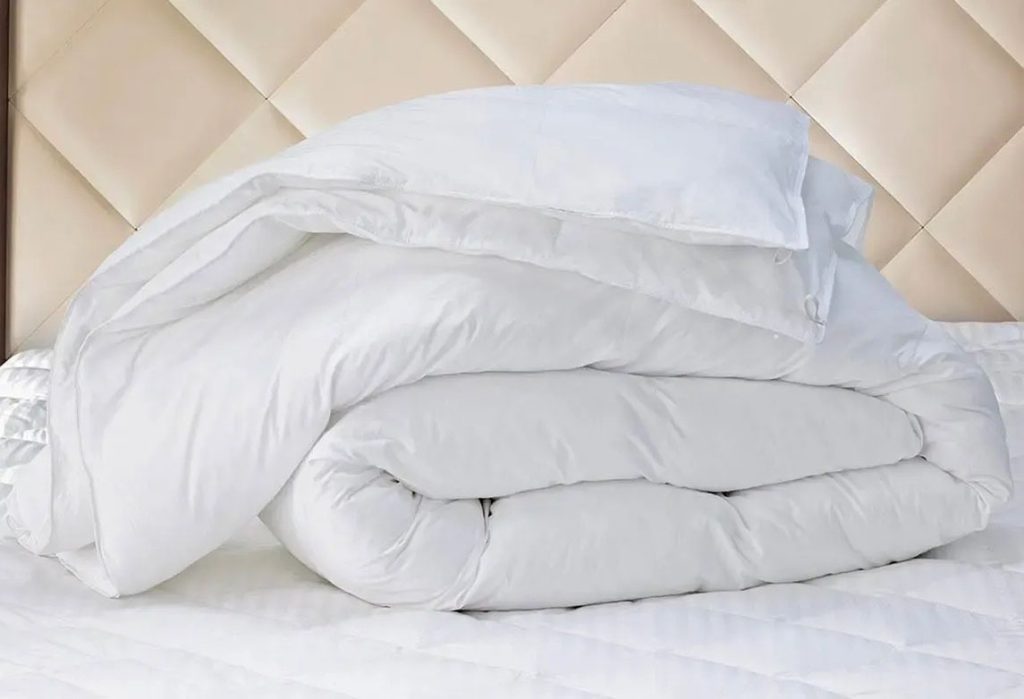
6. Hypoallergenic Options
If you suffer from allergies, choosing a hypoallergenic duvet is essential. While many natural fillings (like wool and silk) are naturally resistant to dust mites, there are also plenty of hypoallergenic synthetic duvets available.
- Anti-Allergy Coatings: Some duvets come with anti-allergy treatments, which are designed to prevent dust mites and other allergens from settling in the filling.
- Machine Washability: Synthetic duvets are often machine washable, which makes it easier to keep allergens at bay. Natural duvets may require dry cleaning or special care, so keep this in mind if you suffer from allergies.
7. Caring for Your Duvet
To ensure your duvet lasts as long as possible, proper care is essential. Here are some tips:
- Use a Duvet Cover: A duvet cover not only protects the duvet from stains and spills but also makes it easier to clean.
- Regular Shaking: For down and feather duvets, shake the duvet regularly to maintain even distribution of the filling.
- Washing: Most synthetic duvets are machine washable, while natural duvets may require professional cleaning. Always follow the care instructions provided by the manufacturer.
- Drying: After washing, ensure the duvet is thoroughly dried to prevent mold or mildew from developing. Using a tumble dryer with dryer balls can help fluff up the filling.
8. Finding the Perfect All-Season Duvet
Choosing the best duvet for all seasons requires balancing warmth, breathability, and personal comfort preferences. For ultimate versatility, an all-season duvet with adjustable tog layers is a fantastic investment. Natural fillings like down, wool, and silk offer excellent temperature regulation, but synthetic options like microfiber provide affordable and hypoallergenic alternatives.
Remember to consider factors such as your sleeping environment, personal preferences, and any allergies when selecting the perfect duvet.
